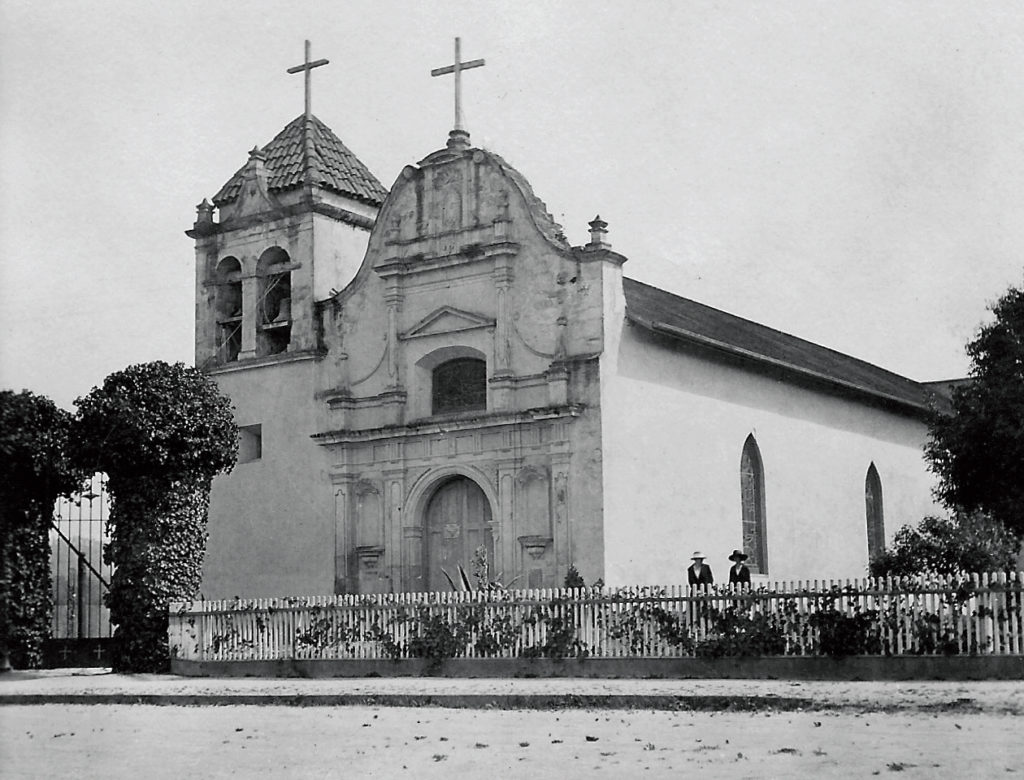 The world-renowned, one-square-mile, beach destination of Carmel-by-the-Sea celebrates its 100th birthday in 2016. This patch of paradise has evolved over the past century into a hotspot with big-city offerings of art, theatre, music, and dining, while existing on the canvas of a fairytale. The magic of Carmel has been carefully fashioned over the last 100 years. From its founders to its current leaders, Carmelites have taken many steps to keep the seaside location idyllic with its forested streets, its neighbors connected with one another, and its homes undeniably picturesque.
The world-renowned, one-square-mile, beach destination of Carmel-by-the-Sea celebrates its 100th birthday in 2016. This patch of paradise has evolved over the past century into a hotspot with big-city offerings of art, theatre, music, and dining, while existing on the canvas of a fairytale. The magic of Carmel has been carefully fashioned over the last 100 years. From its founders to its current leaders, Carmelites have taken many steps to keep the seaside location idyllic with its forested streets, its neighbors connected with one another, and its homes undeniably picturesque.
“Carmel is a microcosm of California’s architectural heritage, sited at one of the most scenic meetings of land and sea in the world. Mission San Carlos Borromeo became a root building for California’s first regional building style, the Mission Revival. ‘Carmel City,’ as it was called in the 1880s, was marketed as a seaside resort for Catholics,” according to Kent Seavey’s book Carmel: A History in Architecture. “Its pinestudded sand dunes survived the imposition of a standard American gridiron street pattern, as a Western, false-front main street, became ‘Carmel-by-the-Sea.’ ”
The Carmel Development Company, with partners James Frank Devendorf and Frank Powers, cofounded Carmel-by-the-Sea. Powers provided the cash and Devendorf the development vision to launch a downtown area in Carmel, starting in 1902. They sold lots, a number of them to artists who were displaced by the 1906 San Francisco earthquake. Soon enough, Carmel’s artist colony was formed, and the city was officially incorporated on Oct. 31, 1916.
Bohemian artists, academics and writers were drawn to the idea of homes lovingly crafted from native materials, blended into and enhancing the natural landscape. Tudor Revival and Spanish Romantic Revival architectural styles further enhanced Carmel’s storybook esthetic. The classic image of Carmel is framed perhaps most notably by the architecture of Hugh Comstock, who, in the 1920s, designed cottages after the style of an English village, complete with rounded doors and stone chimneys. Beginning with a tiny fairytale cottage to house his wife’s Otsy Totsy doll collection,“Comstocks” became the signature style of the Carmel cottage. Twenty one of Comstock’s original cottages are still standing in Carmel today.
Present-day visitors can still see a mesmeric blend of shingled beach houses, modern glass homes, log cabins, and charming cottages. As they walk around this enclave, visitors will not find street addresses, parking meters or streetlights (except in the business district). There are very few sidewalks to stroll on outside of the downtown commercial area. The founding fathers responsible for these and other quirks—including the absence of home mail delivery—thought they would help prevent Carmel-by-the-Sea from becoming urbanized.
As a longtime haven for artists of all persuasions, the town endures as a hub for art aficionados who relish touring the various galleries around town. More than 100 local professional artists’ work is shown at the Carmel Art Association’s gallery on Dolores Street. The Association, founded in 1927, is the second oldest of its kind in the nation. Carmel Sunset Cultural Center, a state-of-the-art performing arts center, also brings a wide range of world-class music, theatre and dance productions. The remodeled building, which began as a public school in 1926, is notable for its spectacular Gothic architecture and unbelievable acoustics.
As Carmel ushers in its centennial year, a group of its dedicated citizens, dubbed the “Centennial Committee,” will make sure all of its achievements over the years are remembered and celebrated. Themed “A Century of Memories,” the campaign was unveiled January 8, 2016 at a celebration on Ocean Avenue. More than 200 gathered near the World War I Memorial Arch to hear speeches and witness the debut of the centennial “Welcome to Carmel” banner. A time capsule buried in 1921 was also opened.
Former Mayor Sue McCloud, also a member of the city’s centennial committee, described the story behind the time capsule to include when a driver hit and destroyed the monument in 1977. The time capsule had to be repackaged, from what was described originally as a ginger jar into a new container—one resembling Tupperware. Current Carmel Mayor Jason Burnett helped to open and empty the capsule, unveiling old advertisements and Carmel Pine Cone clippings inside, most dating back to 1921. Among those present were Kirk Gafill, the great-grandson of Frank Powers, and Jack Galante, the great-grandson of James Frank Devendorf, the city’s founders.
The Centennial Committee has planned a variety of events, in observance of the city’s 100 years. After the time-capsule unveiling event in early January, the celebration campaign continued with a talk by Jack Galante titled “Reliving Our History” on Jan. 21 at the Sunset Center.
Future events will include concerts, a freestyle surfabout, an art festival and performances at the renovated Outdoor Forest Theater. The Centennial will conclude on October 29 with a community parade. Special recognition will be given to the artists, poets and architects that have been part of the history of Carmel over the last 100 years. A new time capsule will be buried in January 2017, containing items from 2016’s centennial events.
Carmel-by-the-Sea may be tiny at just one square mile in size, but this one-of-a-kind Central California gem is big on culture with history, community, landscapes, and many unique offerings.
For more information on Carmel Centennial events visit: http://www.carmelcentennial.com.